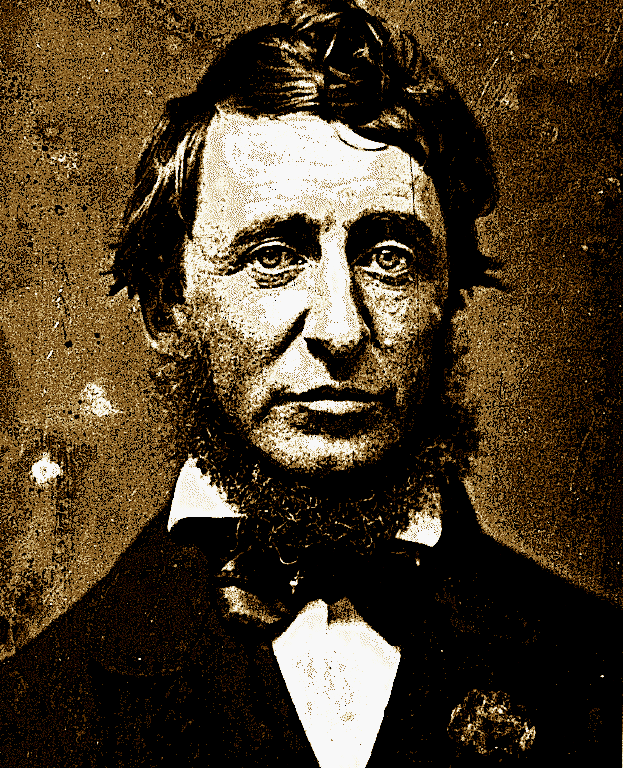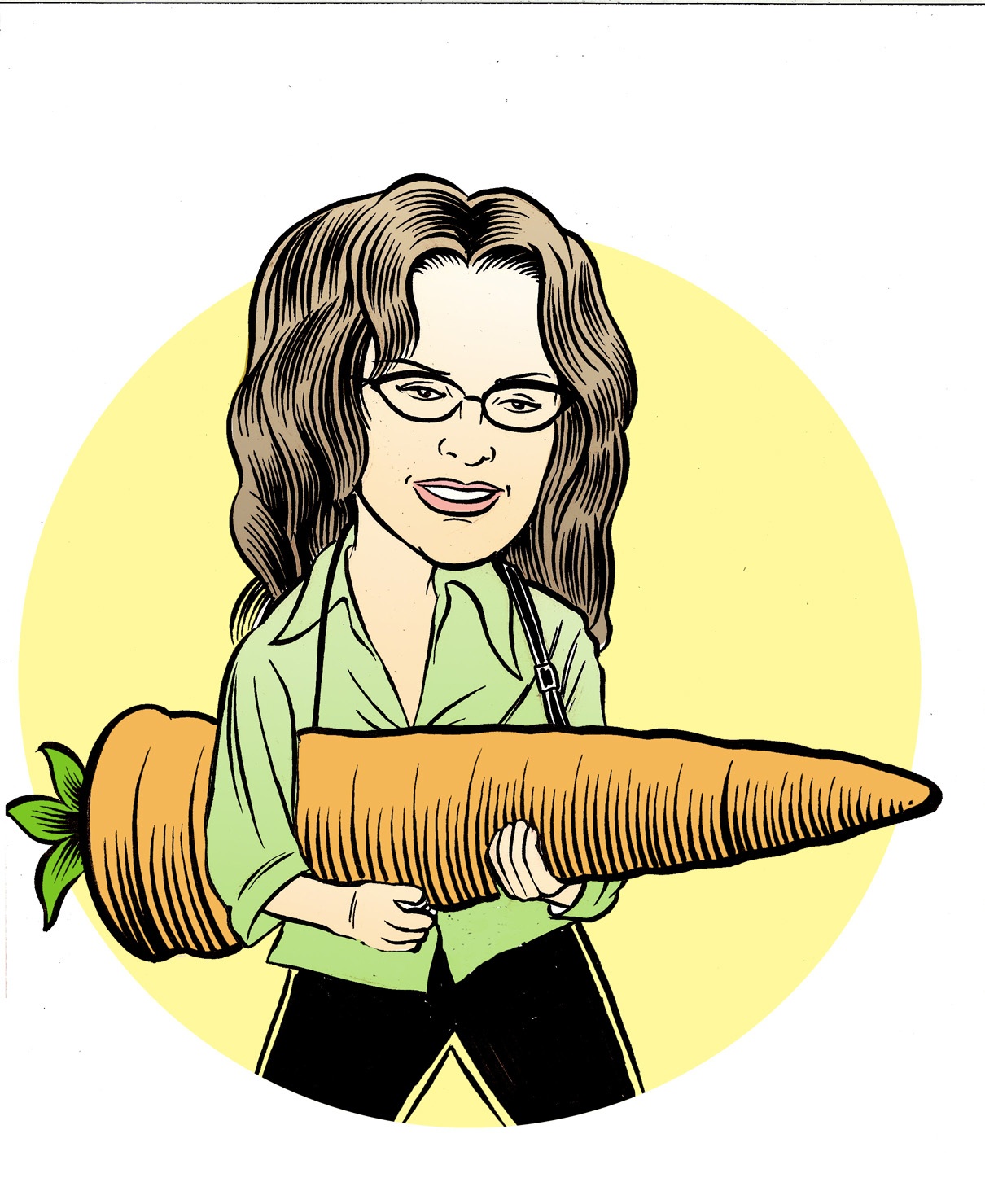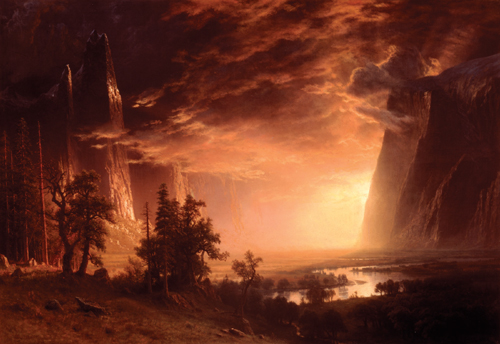
 BY ELIZABETH FIEND I’ve been reading Wild Fruits, an unfinished, recently published manuscript by American naturalist Henry David Thoreau [pictured, above]. The book is a combination of diary and essay, chronicling the ways Thoreau spent his days and what he learned during the final years of his brief life. With each page I get more jealous, wishing I too could spend my day stalking a bee to find its hive and to learn what type of flower the bee drinks nectar from and how that affects the flavor of the honey.
BY ELIZABETH FIEND I’ve been reading Wild Fruits, an unfinished, recently published manuscript by American naturalist Henry David Thoreau [pictured, above]. The book is a combination of diary and essay, chronicling the ways Thoreau spent his days and what he learned during the final years of his brief life. With each page I get more jealous, wishing I too could spend my day stalking a bee to find its hive and to learn what type of flower the bee drinks nectar from and how that affects the flavor of the honey.
Of all the things I love to do (and I love to do a LOT of things) observing nature is on the top of my list. Fantasizing how I could manage to spend my days doing what Thoreau did, I realized my main stumbling block is that I’m just not as big of a mooch as Thoreau. Sure, he worked some in his family’s pencil factory (in fact, he “invented” the modern clay-and-graphite pencil). But he also spent quite a lot of time not working, crashing at his mentor Ralph Waldo Emerson’s house and living on, and off of, Emerson’s land.
I work full time at a library, not some of the time at a pencil factory. But still, I manage to spend quite a lot of time observing nature, especially the ecology of my South Philly back yard. There’s a lot going on outside, even in the midst of a large city. I actually start my observing while I’m still lying in bed each morning — If you listen to the sounds of the outdoors you can learn quite a lot, especially about the birds. In fact, I think I know more about what the birds in my ‘hood are up to than my human neighbors, whom I never see and don’t particularly want to hear.
the sounds of the outdoors you can learn quite a lot, especially about the birds. In fact, I think I know more about what the birds in my ‘hood are up to than my human neighbors, whom I never see and don’t particularly want to hear.
Phenology — derived from the Greek word phainomai, to appear or come into view — is the study of the seasonal timing of life-cycle events. As the seasons change, so do the actions and characteristics of living things. Phenology is mostly concerned with firsts: the first day the maple trees bud-out in spring, or the first day they begin to show fall color. It is a very, very old science, older than the word science.
I try to apply the science of phenology to my own back yard. Instead of going by a calendar date to plant peas, or prune roses, you take your cue from other living things. I prune my roses when the forsythia blooms. Are the hellebores blooming? Okay, time to prune the grapes and other hardwood fruit trees.
Phenology is also helpful to understand and predict when a particular plant will come alive in the spring. Right now, my lavender plants aren’t showing any sign of life, while almost everything else around them is. But I’m not panicking because I observed and studied the plant in previous years so I know it’s one of the last plants to show new growth. I also observed a professional landscaper pulling out some oak leaf hydrangeas last week — too bad, because I knew they weren’t dead, just slower to bud out than other shrubs.
Since the dawn of Homo sapiens, humans have used phenology to survive. Our earliest ancestors had to learn how the unfolding of the seasons related to the food chain, and had to watch for signs from nature herself. When was the season to hunt, to gather, to stock up on food? And phenology’s role in the development of agriculture was immense. Plant your seeds when it’s too cold, too wet or too hot they won’t germinate. Understand the signs, or starve.
Today, phenology has an important role in the global warming debate. For centuries obsessive phenologists have been keeping detailed logs of nature’s seasonal changes. In China and Japan, the blooming of cherry and pear trees was always noted and celebrated. Festivals that date all the way back to the 8th Century are held when the blossoms arrive.
Phenology won’t tell us if global warming is man made, but the records kept by phenologists tell us that changes are definitely afoot. In Burgundy, France, home of the pinot noir grape, detailed logs of temperature variations were registered continually in parish municipal archives since 1370. Wow. In a report published by Nature, these records were used to reconstruct 700 years worth of spring/summer temperatures in that specific part of the world. The study showed that indeed there have been periods of higher-than-normal temperatures, but the summer of 2003 had the highest recorded temperatures ever.
One of the things phenologists note is the growing season of any particular geographical location. These are the days in-between the last and first frost. The growing season in any given area is important because it concerns food production. That date is used to know when it’s safe to plant, when it’s time to harvest and also which plants are suitable for the area. If you have a short growing season, stick with tomatoes and basil, a longer growing season try some watermelon.
Based on a recent analysis of area temperatures over the past 30 years, Philadelphia’s growing season has expanded by a full lunar cycle! Of course, less than one week after these figures were reported, we embarked on a round of record-breaking cold weather; this April has been the coldest in 40 years.
During the cold snap, if one more person came up to me and said, “So much for global warming” I was going to have to bite their head off, like I recently saw a sharp-shinned hawk do to a pigeon in my back yard. Global warming is about weather chaos, people, it’s not a measured, systematic slide into balmy tropical temperatures. Global warming is going to bring wide, unpredictable swings in temperatures of the air and oceans. It’s going to cause too much rain, too little rain, or rain at the wrong time. It will lead to flooding and drought. We’ll see hurricanes and twisters where there never were any, and more fierce storms in areas already prone to them. It’s going to be hell. Think global weather chaos rather than global warming and you’ll be more prepared for your future life.
But also think food shortages and economic hardship. No matter the technical advancements in agribusiness, agriculture is highly dependent on climate. Temperature, solar radiation and precipitation are the drivers of crop growth.
It was once proposed that global warming would actually create a boost in agricultural productivity due to increased carbon dioxide in the atmosphere. On paper this looked right. But recent studies showed that yes, plants like carbon dioxide (there’s already super poison ivy growing about the East Coast). But plants hate ozone, another side effect of global warming, so we should look forward to a decrease in food production.
Production patterns of our food will change in ways we can’t really anticipate.
Wheat germinates at a very specific temperature. As the temperature changes due to global warming agricultural zones will move closer to the poles. No more bread basket in Middle America. Soon our bread basket will be in Canada.
Corn is pollinated by the wind. Pollen is blown from the corn tassels to the silks inside the ears. Yes, global warming will change our wind patterns too. Too much wind will blow the pollen too far away, too little won’t get the job done. We may be eating corn with empty rows and missing kernels.
Global warming isn’t just going to affect the weather. It will affect all the things that weather affects. When nature loses its predictability, things have a tendency to spiral out of control. Living things, animals, insects, birds and plants not only live in a cycle, their cycles are dependent on the cycles of other living things. Global warming is going to affect the birds and the bees which in turn will affect our food supply.
Fruit trees like apple, peach and cherry, burst into a brilliant haze of blooms each spring, and the flowers only last a few days. If the bees don’t arrive to pollinate at exactly the right time, there will be no fruit to eat. Citrus production will decrease because of an increase in disease, some of which is weather-related, others are caused by insects. Because of changing weather cycles, birds and ladybugs will not arrive on time to eat the aphids that suck the life out of other crops.
If you really look at nature and study her habits you’ll know, this is not an intelligent design it’s too intricate and complicated. I’ll even go as far as to say that Nature is one crazy lady. The late Kurt Vonnegut recently observed that the planet Earth is treating human beings as a scourge, a plague, or more accurately a germ. Global warming is the planets self-defense mechanism. Earth has developed a fever to get rid of us, to kill us off before we kill her.
Elizabeth‘s Sparrow Cheat Sheet
If you’d like to be a junior-phenologist and get more involved with nature and learn her cycles start with the sparrows, they’re everywhere, everyday. Maybe they all look the same to you, but they’re not. Here’s my cheat sheet to the most common sparrows in our area. Check ’em out. Where do they hang, what do they eat, why do they fight, what makes them sing, and how do they get their girlfriends?
House Sparrow aka English Sparrow
Most common Sparrow
Male: black beak
Female: yellow beak
Plain top of head
Tan rump
Aggressive and abundant
Chipping Sparrow
Red head
White eye brow
Black line from bill past eye to ear
Gray nape and cheek
Two white bars on wings
Song Sparrow
Broad grayish eye brow
Broad black stripes on white throat
Under parts whitish
Legs and feet are pink
White Throated Sparrow
White throat
Dark crown
Black stripes and eye lid
Eurasian Sparrow
More rare
Brown is redder
Black dot on side, not on chest
Tan rump
Sources and For More Information:
Henry David Thoreau:
http://www.transcendentalists.com/1thorea.html
Phenology and climate change:
http://www.islandnet.com/~see/weather/almanac/arc2003/alm03mar.htm
http://poorwillsalmanack.com/index.html
http://www.nature.com/nature/journal/v432/n7015/full/432289a.html
Longer growing season in Philadelphia:
http://www.philly.com/philly/health_and_science/20070326_WeatherWatch___Growing_season_is_longer__but_what_does_that_mean_.html
Pollination:
http://msucares.com/lawn/garden/vegetables/pollination/index.html
ABOUT THIS COLUMN: At no time in recorded history have we possessed so much knowledge about health and nutrition, nor have we ever had such vast and effective machinery for disseminating that knowledge — and yet, for all intents and purposes, we live in hi-tech Dark Age with the vast majority of the global population essentially ignorant or confused about the basic facts of their own biology. How did this happen? Well, that’s a whole six-part mini-series in and of itself, but the short answer is that the bottom line of many a multi-national corporation is dependent on that ignorance, and vast sums of money are expended to maintain it. The global warming argument is a classic example. When scientific fact did not favor Big Oil, they hired their own scientists to to conduct and publish studies that contradicted the peer-reviewed facts about the environmental impact of carbon-based emissions. As a result, whenever the latest global warming news is relayed to the public, it always comes with the caveat that “some dispute these findings.” There was time when newspapers saw it as their duty to truth squad these debates, but that’s long since become a luxury most papers can no longer afford — better to hire another gossip columnist and give the people what they want. To fill this crucial gap, Phawker began publishing Elizabeth Fiend’s JUNK SCIENCE column. Every week, Miss Fiend connects the dots to reveal a constellation of scientific facts that have been hiding in plain sight — scattered across the vast, cold reaches of the Internet. With a background in punk rock and underground comics, and longstanding employment as a de facto research librarian, Miss Fiend doesn’t pretend to be a scientist or an expert. She does, however, know how scientific facts become diluted by corporate-sponsored non-facts, and every week she separates the smoke from the mirrors. Why? Because she loves you.
